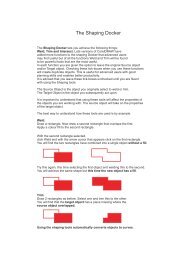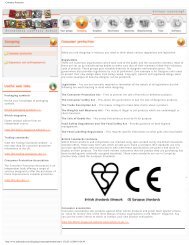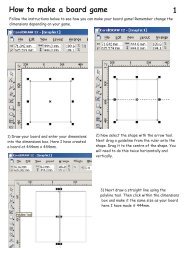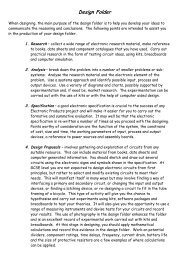Material finishes - A Design & Technology Website
Material finishes - A Design & Technology Website
Material finishes - A Design & Technology Website
You also want an ePaper? Increase the reach of your titles
YUMPU automatically turns print PDFs into web optimized ePapers that Google loves.
<strong>Material</strong> <strong>finishes</strong><br />
<strong>Material</strong> <strong>finishes</strong> overview<br />
Most materials will require an exterior finish to improve the look of the material and to protect it from<br />
the environment. Surface <strong>finishes</strong> can be applied by numerous methods including brushing, spraying<br />
and dipping. The main surface <strong>finishes</strong> that are available include paints, varnishes and lacquers, oils,<br />
polishes, stains, sanding sealer, plastic dip coating, powder coating, anodising, plating, galvanising,<br />
enamelling, polishing and self finishing.<br />
Finishes are usually applied for one or more of the following reasons:<br />
1.) To protect the material from moisture, wear, abrasion, fungus, mould or insect attack.<br />
2.) To change the materials appearance, its colour or texture.<br />
3.) To enhance the materials durability, surface hardness or other properties.<br />
Read the surface <strong>finishes</strong> overview table below to learn more:<br />
How stuff works<br />
Learn more about the material <strong>finishes</strong><br />
from how stuff works website.<br />
View the tep web page >><br />
<strong>Technology</strong> student<br />
Revise about symbols that appear on paint<br />
containers.<br />
View the technology student site >><br />
Type of finish <strong>Material</strong> Description Examples<br />
Paints<br />
Metals<br />
Wood<br />
Varnishes and lacquers Wood<br />
(*Metals)<br />
Oil<br />
Wood<br />
Metal<br />
Paints: are usually suitable for<br />
metals or timber but not<br />
plastics. Paints are divided into<br />
three main groups oil based<br />
paints, water based paints and<br />
solvent based paints.<br />
Varnishes and lacquers: are<br />
available in oil, water and<br />
solvent based types. They are<br />
used on woods (*) however<br />
some special types exist for<br />
metals.<br />
Oil: Various types exist for<br />
metals or woods. Oil provides an<br />
improved appearance for wood<br />
by enhancing the grain.<br />
Vegetable oil can also be applied<br />
to wood which comes in contact<br />
with foods. Oil is also used on<br />
metals to protect it from rust.<br />
French polish Wood French polish: is applied to wood<br />
by using a brush and cloth to<br />
add several layers which<br />
provides a deep finish. Wax is<br />
then applied to improve the<br />
shine.<br />
Wood stains Wood Wood stains: are used to<br />
improve the colour of the wood.<br />
Wood stain if used on its own<br />
only colours the wood and so<br />
and requires a coating of wax or<br />
varnish to make it weather proof.<br />
Sanding sealer Wood Sanding sealer: is like varnish<br />
which is used to seal wood to<br />
moisture. Sanding sealer is good<br />
as a first coat before applying<br />
varnish or wax.<br />
Car bodies, lawn mowers,<br />
tools, etc.<br />
External wood- boats/<br />
yachts, furniture.<br />
Internal furniture, etc.<br />
Wooden spatulas, salad<br />
servers, Guns, engineering<br />
products.<br />
Internal furniture only.<br />
Benches, sheds, fences,<br />
etc.<br />
Internal furniture only.<br />
http://www.lanfrancdt.co.uk/materials/material<strong>finishes</strong>.htm (1 of 2)02/01/2007 19:37:29
<strong>Material</strong> <strong>finishes</strong><br />
Plastic dip-coating Metal Plastic dip-coating: Plastic<br />
powder is used for dip coating.<br />
The metal is heated and is then<br />
dipped in a plastic powder eg:<br />
coat hooks.<br />
Powder coating Metal Powder coating: like dip coating<br />
but it is a more sophisticated<br />
process used in industry. The<br />
powder is sprayed onto products<br />
which run through an oven.<br />
Anodising Metal Anodising: is a process used on<br />
aluminium to provide a hardwearing<br />
corrosion-resistant<br />
finish. Anodising involves<br />
electrolysis and uses acids and<br />
electric currents.<br />
Plating Metal Plating: is another process used<br />
on aluminium which uses<br />
electrolysis. A thin plating layer<br />
of metal on the surface provides<br />
a durable finish to metals which<br />
are prone to corrosion.<br />
Galvanising Metal Galvanising: involves dipping<br />
metal into a bath of molten zinc.<br />
The zinc provides a good<br />
corrosion resistant finish.<br />
Self-finishing Plastics Self-finishing: Many plastic<br />
products are self finished for<br />
example injected moulded<br />
products. This means the<br />
product does not need a finish.<br />
Enamelling Metal Enamel: A powdered glass is<br />
melted and fused onto the<br />
metal. This requires high<br />
temperatures. This finish is very<br />
heat resistant.<br />
Polishing<br />
Metals<br />
Plastics<br />
Polishing: By hand or with<br />
machines to produce a shine.<br />
This is not a durable finish and<br />
the metal may tarnish or oxidise<br />
again in the future. Chemical<br />
polishes such a 'Brasso' use a<br />
liquid borne abrasive to raise a<br />
shine.<br />
Tool handles. Garden<br />
equipment, hooks, etc.<br />
Metal desk frames, chairs,<br />
internal car parts<br />
Used on aluminium<br />
products.<br />
Bike wheels, kitchen<br />
equipment, car parts, nuts/<br />
bolts/hinges where<br />
appearance is important.<br />
Gates, buckets, nuts and<br />
bolts, screws, hinges, nails.<br />
Injection mouled products.<br />
Jewellery, baths, pots and<br />
pans, oven liners.<br />
Jewellery, brass, copper<br />
and bronze ornaments.<br />
Lacquer can be applied to<br />
prevent oxidisation.<br />
Mr DT says 'Read the text above and then answer these questions below'. Write your<br />
answers on a sheet of paper, dont forget to write your name on the sheet!:-<br />
1). Why are <strong>finishes</strong> usually applied?<br />
2.) Name three metal <strong>finishes</strong>?<br />
3.) Name three wood <strong>finishes</strong>?<br />
4.) Name two plastic <strong>finishes</strong>?<br />
5.) Name some products that wood stains are used on?<br />
6.) Name some products that enamelling is used on?<br />
7.) What is plastic dip-coating?<br />
8.) How is french polish applied to furniture?<br />
9.) What else should you use with sanding sealer?<br />
10.) What oil should you use on wood which comes in contact with foods?<br />
Home Contact Us Site map Copyright 2006 Mr K.Cooper<br />
http://www.lanfrancdt.co.uk/materials/material<strong>finishes</strong>.htm (2 of 2)02/01/2007 19:37:29









